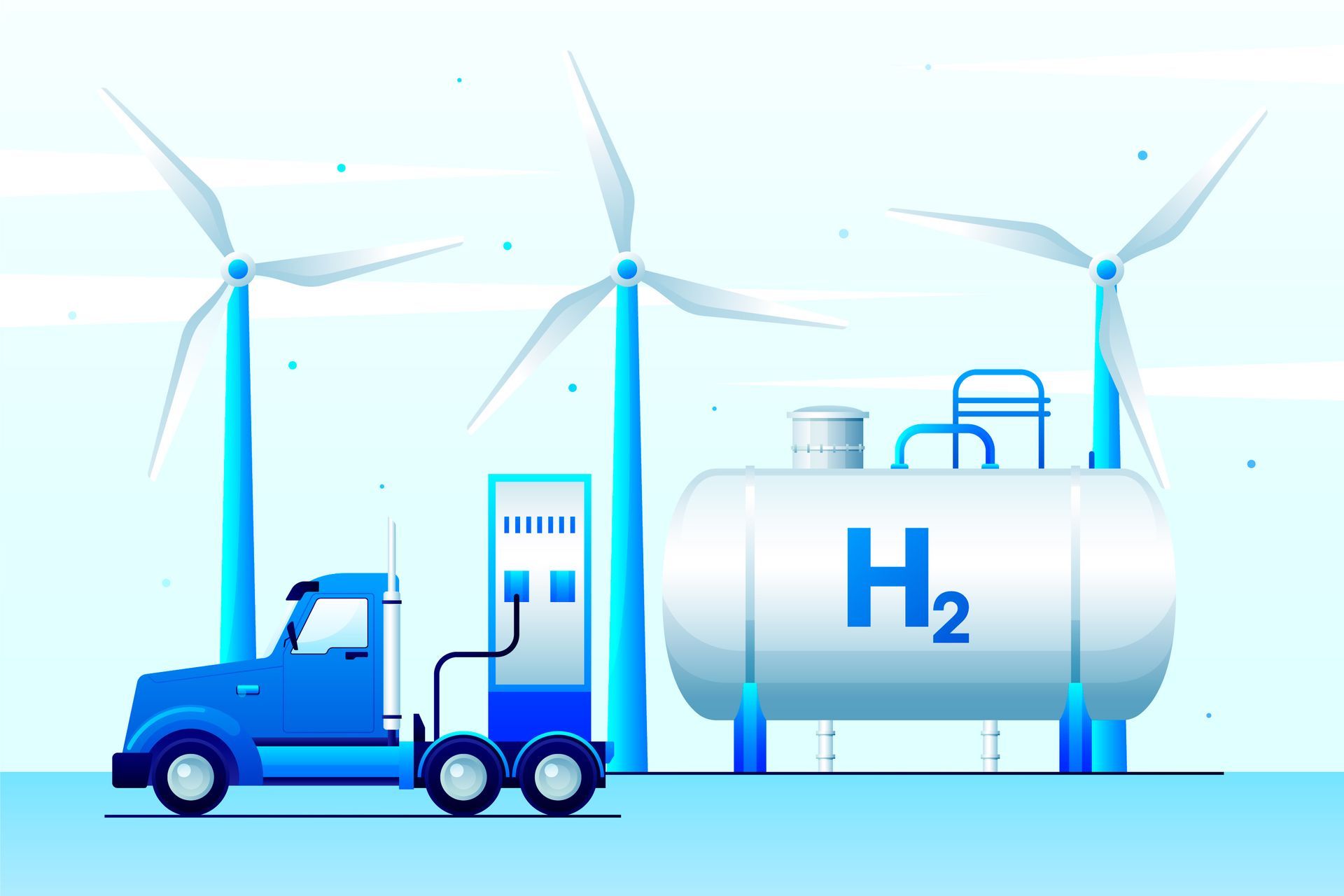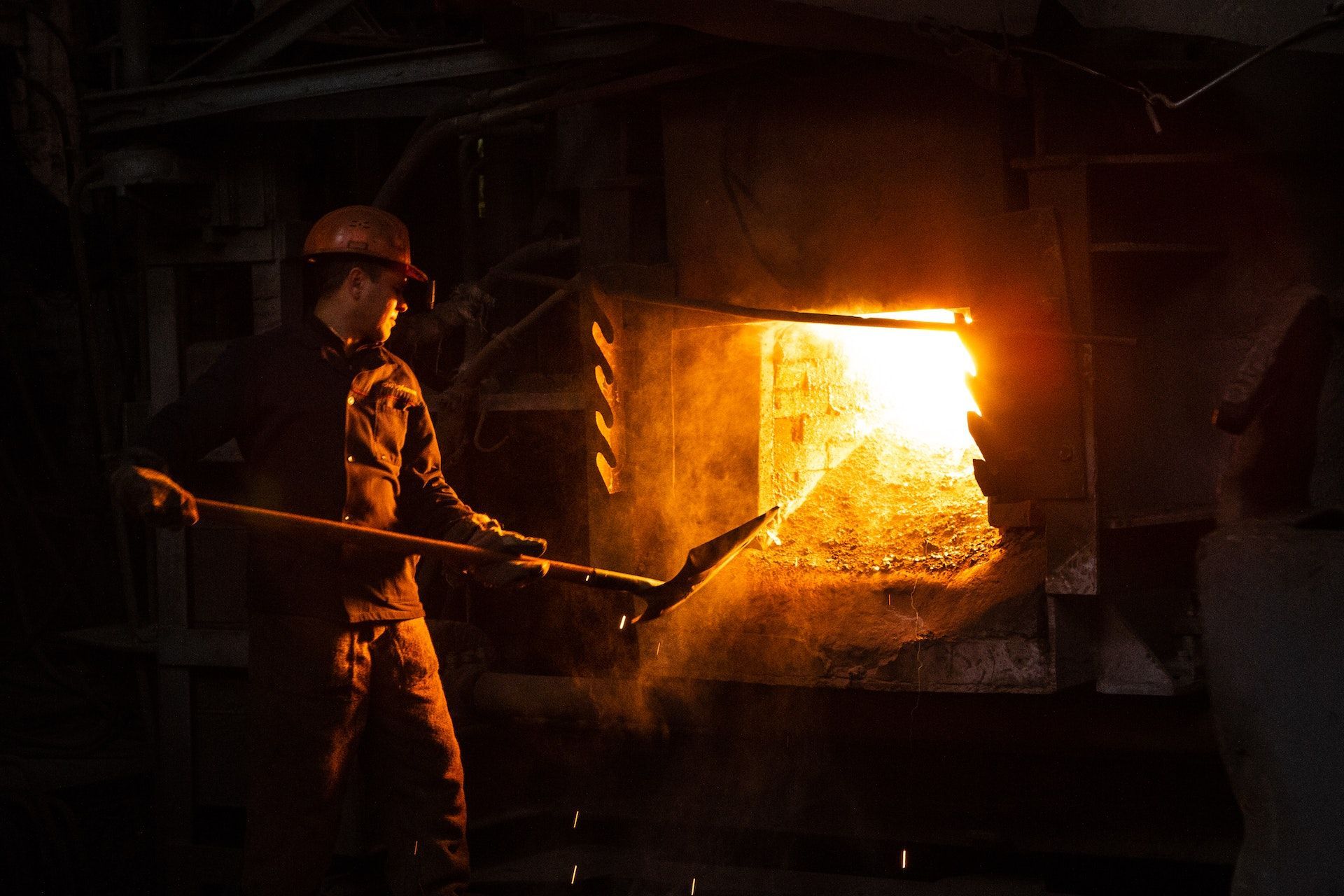This is a subtitle for your new post
Most buildings in Romania are decades old and the energy used to heat them is increasingly expensive. Can researchers help cut costs and reduce greenhouse gas emissions?
As Romania braces itself for a long winter with skyrocketing gas prices, renewable energy seems to be one of the only viable options for heating homes and public buildings. A project at the University Politehnica of Bucharest (UPB) shows how solar and thermal energy technologies could be used together to reduce costs and greenhouse gas emissions.
Researchers have upgraded the heating system of a building belonging to the Faculty of Power Engineering called the Renewable Energy Sources Lab. The Lab was previously connected to Politehnica’s gas-fired heating network, but it has never been adequately heated during the winter because it is located at the end of a network’s branch.
Now the team of researchers led by vice-dean Dr. Constantin Ionescu has demonstrated that a hybrid heating system powered by geothermal and solar energy could improve the thermal comfort of the student. The solution, which includes photovoltaic panels, solar thermal panels, and geothermal heat pumps, can be easily replicated elsewhere.
The Bucharest site is part of the WEDistrict project, and the European Union funds it through the Horizon 2020 programme. In addition to Bucharest, renewable district heating solutions are being implemented in three other locations: Alcalá de Henares (Spain), Luleå (Sweden), and Bierutów (Poland).
“WEDistrict was born from our desire to show that fossil fuels can be replaced by optimally integrating different renewable energy sources in both existing district heating systems and new ones,” Dr. Ionescu says.
In Romania buildings account for approximately 30% of the total energy consumption, according to Eurostat. Many public buildings, houses and blocks of flats were erected before the fall of communism and little has been done to upgrade them and make them energy efficient.
If replicated, projects like WEDistrict could help the European Union reach its goals of becoming the first carbon-neutral community by 2050 and cutting net greenhouse gas emissions by 55% by 2030, compared to 1990.
How it works
The Renewable Energy Sources Lab has a total surface of 400 square metres. Researchers say it was the perfect site to test how renewable energy sources could be integrated into an existing district heating and cooling network.
The project has several components. First, photovoltaic panels are installed on the roof to capture the sun’s energy and convert it into electricity. This electricity is used to power the geothermal heat pump that heats the building. The pump then transfers heat from the ground to the building using a network of water-filled underground pipes, which absorb the earth’s heat and transfer it to the Lab.
By using this geothermal system in tandem with photovoltaic panels, researchers can heat the lab only relying on renewable energy.
The researchers wanted their solution to be easily replicated by anyone, for example those living in a block of flats in one of Bucharest’s districts. It’s why they’ve chosen several different products for each technology they’ve incorporated.
“For instance, we’ve used three types of solar panels, three types of inverters,” says associate professor, Dr. Mihai Vasile Sănduleac. “We wanted to build a solution that can be integrated, that simulates real-world conditions.”
The whole project is monitored and controlled through a SCADA-EMS system, a software application for industrial processes that enables the researchers to know all the necessary parameters in real-time. This system can make decisions automatically, and it also helps researchers to gather a lot of data for future analysis. The tool is available for free to anyone who would like to use it or and modify it.
“The SCADA application is open source and cross-platform—it can run on Microsoft Windows, Linux, and macOS,” adds Dr. Sănduleac.
With most of the work done, the researchers think about the next step. “If we can replicate the project to three or four buildings within the campus, then we will be producing more green energy,” says professor Dr. Roxana Pătrașcu.
She and her colleagues hope that their solution will gradually be adopted by the public sector, as well as by people living in buildings located at the end of a heating network’s branch.
“The project can easily be replicated in residential areas,” says Dr. Cosmin Mărculescu. “We’ve proven that such a project can be successfully used in locations with complex operating requirements.”
Making buildings energy efficient
So far, Romania has been slow at retrofitting its buildings to make them efficient. More than 90% of the country’s public buildings, houses and blocks of flats were built before 1989, when energy performance wasn’t taken seriously. According to a report by independent energy think tank EPG, one in seven families in the country faces severe housing problems such as poor quality walls, floors, and window frames.
“To achieve the energy efficiency goals and targets established by national and EU strategy documents, the Romanian building stock needs an increased energy performance,” the EPG report reads.
Aiming for energy efficiency is one thing; achieving it is another. Although different European mechanisms support the improvement of building efficiency, progress has so far remained slow. Typically each year only about one to three percent of Romania’s residential buildings are made more efficient through simple processes that could reduce energy consumption by up to 60%. More complex projects aiming to pass the 60% efficiency mark are almost nonexistent.
With this new hybrid heating system, the researchers at the University Politehnica of Bucharest hope to inspire others to bet on green energy. The solar panels and the heat pump they’ve installed could potentially reduce the university’s CO2 emissions by around 32 metric tonnes per year.
More articles!

By EuroScientist Editor
•
07 Sep, 2023
Hydrogen fuel can be made from wood waste in a clean and cost-efficient way at heat and power plants – and its developers hope it could change the narrative around this sometimes-controversial solution. By Steve Gillman & Fintan Burke The costs of scaling up hydrogen power, along with the potential amount of energy and natural resources to produce it, have seen this fuel source face increased scrutiny as a solution against climate change. “The majority of our electricity and hydrogen is produced from fossil fuels. This, of course, is not sustainable as it contributes to climate change,” said Michael Bartlett, a founder of Phoenix Biopower, a company that turns natural waste into combustible gas, like hydrogen. As part of a research project called Bio-FlexGen, Bartlett is developing ‘green hydrogen’ from biomass waste from the forestry sector. “Our ultimate goal is to provide a secure, renewable and low-cost energy for society and industry,” he adds. Bio-FlexGen, and its multidisciplinary team of 14 partners from five EU countries, aim to provide the technology for combined heat and power plants (CHP) that can also generate a supply of green hydrogen in addition to usual outputs of electricity and heat. To make green hydrogen, Bio-FlexGen will use a combination of two main technologies – a gas turbine and a gasifier. First, waste biomass is added in a gasifier at pressure and heated up to 850 Celsius – a temperature so hot that it releases other gases, mainly hydrogen, methane, and carbon monoxide. The next step sees water and steam added to cool before it passes through a cleaning filter. “Once we have cleaned up the gases from the gasifier, we can either send it to the gas turbine for combustion and electricity generation or to a hydrogen production unit,” said Bartlett, adding that this process gives “enormous power” and efficiency to the CHP plant. The high temperatures of this process, over 1400 Celsius in the gas turbine combustor, also result in greater power generation. To ensure a high efficiency, the system is designed to gather waste heat and recycle it back into the gas turbine in the form of hot steam. This, Bartlett says, can result in double the electricity output that is typical for a given amount of biomass. The new approach means the CHP plant then has three modes of operation; 1/ produce heat and electricity efficiently from biomass in the winter 2/, produce green hydrogen and biogenic CO2 from biomass in the summer 3/ utilise hydrogen in the gas turbine for peak power. This flexibility means it can help keep costs low and stable and complements the hourly, weekly and seasonal variability of solar and wind power. Converting critics and pushing EU hydrogen plans ahead Bio-FlexGen’s systematic approach to incorporating green hydrogen could go a long way in negating the main arguments against this renewable energy, primarily the amount of natural resources it requires for its production. According to Rystad Energy, 620 million cubic meters of water are needed to produce 85% of the green hydrogen capacity planned for 2040. However, environmental groups like Greenpeace argue that renewable power alone is not enough to produce the needed amount of green hydrogen. If anything, they claim this may end up increasing fossil fuel demand. But Bio-FlexGen’s green hydrogen production utilises oxygen to drive the gasification process, itself a by-product of green hydrogen production from wind and solar power. “The main advantage of getting hydrogen from biomass compared to wind or solar is that it has less variability and is not dependent on electricity price,” said Bartlett. “It also requires less H2 storage (you store biomass instead) for when the wind doesn't blow.” When producing electricity from biomass in the CHP plant, a lot of steam is needed in the gas turbine for the best effect. In fact, 50% of the exhaust is just water vapour. This water is recovered, treated and recycled back to this process, and an excess of clean water can even be produced for other consumers. When this water is recovered, it also generates large amounts of heat, which the project can use further in district heating networks or other processes. In this way all the energy in the biomass is efficiently used. “We are working very hard to ensure that we are part of a circular biomass utilisation and that we are using hydrogen in the safest possible way,” explains Bartlett, adding that the project will make a “significant contribution to the decarbonisation of the energy system”. The first commercial plant using Bio-FlexGen’s approach is planned for 2030, in which the power plant will operate on biomass in the winter months and use 100% green hydrogen in the summer months, therefore displacing demand for fossil fuels in peak periods – a goal increasingly shared by EU policymakers. Following the war in Ukraine, and the embargo on Russian oil imports into the EU, the European Commission outlined a ‘Hydrogen Accelerator' concept to scale up renewable hydrogen deployment. This ‘REPowerEU Plan’ wants the EU to produce 10 million tonnes of renewable hydrogen by 2030, with the Commission recently proposing criteria that Member States can follow to ensure they produce green hydrogen, including that it only be produced when and where sufficient renewable energy is available. As BioFlexGen’s power plant will operate with up to 100% green hydrogen from solar and wind, with an optimised combination of bioenergy, it is already on course to meet these criteria. Bartlett also believes that the project has brought together “amazing, competent people” that can play a key role in developing green hydrogen further.

By EuroScientist Editor
•
07 Sep, 2023
Author: Jane Marsh Scientists are researching a theory known as positive climate tipping points. While most people talking about tipping points concentrate on their negative consequences, such as irreparable harm to ecosystems, positive tipping points provide a ray of hope. These points may result in favorable and constructive changes to our planet's climate system as the effects of climate change continue. Learn more about the idea of positive climate tipping points, consider their possible advantages and discuss their significance in understanding and tackling the problems caused by climate change. Understanding Tipping Points To fully understand positive climate tipping points, it is essential first to understand what tipping points are. Tipping points are key thresholds in a complex system where a minor change can cause significant and sometimes irreversible changes in the system's behavior. Harmful climate change tipping points may be the first type that comes to mind. These relate to occurrences like the melting of significant ice sheets or the disruption of essential ocean currents, which can have quick and harmful repercussions. However, there are also positive tipping points that may shape the future climate. Positive Climate Tipping Points Unlike negative climate tipping points, positive ones can increase ecosystem resilience and bring about encouraging changes. These turning points take place when certain environmental activities or changes trigger self-reinforcing mechanisms that improve the earth's capacity to absorb carbon dioxide, lower greenhouse gas emissions or support the preservation of vital habitats. Forest preservation and restoration is one illustration of a favorable climate tipping point. As forests grow and recover, they sequester a greater amount of carbon dioxide, which lowers the levels of greenhouse gases in the atmosphere. This process creates a positive feedback loop that encourages greater forest development and improves the ability of these ecosystems to control the temperature. Relevance and Implications of Positive Tipping Points Positive climatic tipping points must be recognized and utilized for mitigation and adaptation initiatives to succeed. Scientists and decision-makers can create targeted interventions to improve the planet's resilience and lessen the effects of climate change by identifying and utilizing these tipping points. Climate tipping points can also encourage and inspire group action. They provide concrete instances of how individual and group activities, such as reforestation programs, sustainable land management techniques and ecosystem restoration projects, can significantly contribute to the fight against climate change. The general public may take inspiration in carrying out sustainable behaviors or supporting laws that help effect positive change. Emphasizing these positive tipping points' potential advantages and ripple effects encourages individuals at all levels. While positive climate tipping points have great potential, it is important to recognize that our understanding of them is still developing. Further research is necessary. These tipping points require identification, monitoring and measurement, which demands continual study and scientific cooperation. Scientists use advanced modeling approaches and thorough data analysis to find potential positive tipping points across different ecosystems. Researchers are also looking into how positive and negative tipping points are connected. Scientists can create comprehensive plans to negotiate the intricacies of climate change and maximize beneficial results by thoroughly comprehending the relationships between these tipping points. Positive Climate Tipping Points Could Be a Game-Changer Positive climate tipping points demonstrate optimism in the fight against climate change. If people locate and utilize these tipping points, we may be able to develop self-reinforcing mechanisms that positively affect our planet's climate system. Scientists, decision-makers and people can take proactive measures in climate change prevention and adaptation by comprehending the significance of positive tipping points and their potential ramifications. The complexity of positive climate tipping points must be further understood through ongoing research and monitoring projects to successfully navigate the challenges of climate change and create a more resilient and sustainable future.

By EuroScientist Editor
•
18 Jul, 2023
It’s no secret that the planet is getting warmer, but July 2023 saw record-high temperatures that really turned heads. 2023 is an El Niño year — in addition to human-caused climate change, the Earth is undergoing an expected cycle of exceptionally warm weather that occurs every few years.
This double whammy has many people reaching for their water bottles and cranking up the AC. Why are scientists so worried about the heat?

By EuroScientist Editor
•
03 Jul, 2023
Hydrogen fuel cells have garnered a lot of attention recently. As the global conversation shifts to emissions-free energy, many people want to know how fuel cells work, whether they could replace internal combustion engines someday and if they can power homes. Here are answers to common questions about the technology.



